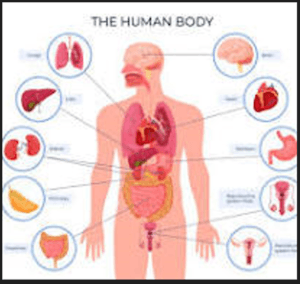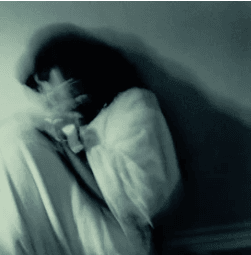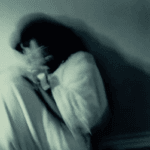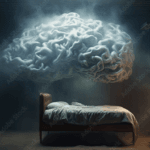MENTAL DISORDERS
Dementia

Stress
Anxiety Disorders.
Depression.
Bipolar Disorder.
Post-Traumatic Stress Disorder (PTSD) .
Schizophrenia.
Eating Disorders.
Disruptive behavior and dissocial disorders.
Neurodevelopmental disorders.
One in every 8 people in the world live with a mental disorder Mental disorders involve significant disturbances in thinking, emotional regulation,
or behavior
Effective prevention and treatment options exist
Most people do not have access to effective care
Anxiety disorders are characterized by excessive fear and worry and related behavioral disturbances. Symptoms are severe enough to result in significant distress or significant impairment in functioning. There are several different kinds of anxiety disorders, such as: generalized anxiety
Disorder (characterized by excessive worry),
Panic disorder (characterized by panic attacks),
Social anxiety disorder (characterized by excessive fear and worry in social situations), separation anxiety disorder (characterized by excessive fear or anxiety about separation from those individuals to whom the person has a deep emotional bond),
Dementia
Dementia is a term for several diseases that affect memory, thinking, and the ability to perform daily activities.
The illness gets worse over time. It mainly affects older people but not all people will get it as they age.
Dementia is a syndrome that can be caused by a number of diseases which over time destroy nerve cells and damage the brain, typically leading to deterioration in cognitive function (i.e. the ability to process thought) beyond what might be expected from the usual consequences of biological ageing.
Early signs and symptoms are:
- forgetting things or recent events
- losing or misplacing things
- getting lost when walking or driving
- being confused, even in familiar places
- losing track of time
- difficulties solving problems or making decisions
- problems following conversations or trouble finding words
- difficulties performing familiar tasks
- Misjudging distances to objects visually.
Common changes in mood and behavior include:
- feeling anxious, sad, or angry about memory loss
- personality changes
- inappropriate behavior
- withdrawal from work or social activities
- Being less interested in other people’s emotions.
- There is no cure for dementia, but a lot can be done to support both people living with the illness and those who care for them.
Physical signs of stress
- Difficulty breathing.
- Panic attacks.
- Blurred eyesight or sore eyes.
- Sleep problems.
- Muscle aches and headaches.
- Chest pains and high blood pressure.
- Indigestion or heartburn.
Insomnia; gastrointestinal upsets, such as diarrhea or constipation; dermatological disorders. Psychological symptoms include: depression
Sometimes known as stress headaches, tension headaches are known to be brought on by stress. Lasting anything from half an hour to a few hours.
Fatigue describes a state of tiredness, exhaustion or loss of energy. Fatigue is sometimes associated with medical conditions including autoimmune disease,
Feeling tired: You expend a lot of mental energy if you are nervous or worried. Research has found that mental fatigue often results in physical exhaustion.
Irritability is the excitatory ability that living organisms have to respond to changes in their environment.
Emotional symptoms: Sadness; Anxiety; Irritability; Depression. People with chronic stress may develop unhealthy behaviors,
Decreased Libido
Menstrual problems; Sexual dysfunction, such as impotence and premature ejaculation in men and loss of sexual desire in men and women; Skin and hair problems,
Anxiety is an emotion which is characterized by an unpleasant state of inner turmoil and includes feelings of dread over anticipated events.
Chronic pain or chronic pain syndrome is a type of pain that is also known by other titles such as gradual burning pain, electrical pain, throbbing pain,
Digestive or bowel problems; Headaches and chronic pain; Social isolation; Problems functioning at school or work; Poor quality of life; Suicide. Prevention.
Feeling panicked. The chemicals released into your bloodstream when you experience stress increase your heart rate, as well as the speed of your breathing…
Bipolar Disorder
Bipolar disorder, previously known as manic depression, is a mental disorder characterized by periods of depression and periods of abnormally elevated mood
A mental illness that causes unusual shifts in a person’s mood, energy, activity levels, and concentration. These shifts can make it difficult to carry out day-to-day tasks. There are three types of bipolar disorder.
This highly energized level of physical and mental activity and behavior is a change from your usual self and is noticeable by others.
During a depressive episode, you experience a low or depressed mood and/or loss of interest in most activities,
- Tiredness.
- Changes in appetite.
- Feelings of worthlessness and hopelessness.
Many people with bipolar disorder experience both hypomanic/manic and depressive episodes. These changing mood states don’t always follow a set pattern
Mood changes in bipolar disorder can happen over a period of weeks, months and sometimes even years.
Signs and symptoms of a manic episode include:
- Excessive happiness, hopefulness and excitement.
- Sudden and severe changes in mood, such as going from being joyful to being angry and hostile.
- Restlessness.
- Rapid speech and racing thoughts.
- Increased energy and less need for sleep.
- Increased impulsivity and poor judgment, such as suddenly quitting your job.
- Making grand and unattainable plans.
- Reckless and risk-taking behavior, such as drug and alcohol misuse and having unsafe or unprotected sex.
- Feeling like you’re unusually important, talented or powerful.
- Psychosis — experiencing hallucinations and delusions (in the most severe manic
Signs and symptoms of depressive episodes
- Overwhelming sadness.
- Low energy and fatigue.
- Lack of motivation.
- Feelings of hopelessness or worthlessness.
- Loss of enjoyment of things that were once pleasurable for you.
- Difficulty concentrating and making decisions.
- Uncontrollable crying.
- Irritability.
- Increased need for sleep.
- Insomnia or excessive sleep.
- A change in appetite, causing weight loss or gain.
- Thoughts of death or suicide (suicidal ideation)
Post-Traumatic Stress Disorder (PTSD)
Post-traumatic stress disorder is a mental and behavioral disorder that develops from experiencing a traumatic event, such as sexual assault, warfare, traffic collisions, child abuse, domestic violence, or other threats on a person’s life
intense, disturbing thoughts and feelings related to their experience that last long after the traumatic event has ended. They may relive the event through flashbacks or nightmares; they may feel sadness, fear or anger; and they may feel detached
symptoms;
- Intrusive Thoughts.
- Avoiding Reminders of the Event. .
- Memory Loss. .
- Negative Thoughts about Self and the World. .
- Self-Isolation; Feeling Distant. .
- Anger and Irritability.
- Reduced Interest in Favorite Activities.
Schizophrenia.
Schizophrenia is a mental disorder characterized by hallucinations, delusions, disorganized thinking and behavior, and flat or inappropriate affect. Symptoms develop gradually and typically begin during young adulthood and are never resolved
Schizophrenia isn’t curable, but it’s often treatable.
Delusions: These are false beliefs that you hold even when there’s plenty of evidence that those beliefs are wrong.
Hallucinations: You still think you can see, hear, smell, touch or taste things that don’t exist, like hearing voices.
Disorganized or incoherent speaking:
This might look like trouble staying on topic, or your thoughts might be so jumbled that people can’t understand you.
Disorganized and unusual movement
you may turn around a lot for no clear reason, or you might not move much at all.
Negative symptoms
you might stop making facial expressions, or speak with a flat, emotionless voice. Negative symptoms also include a lack of motivation,
- Feel suspicious, paranoid or scared.
- Not care about your hygiene and appearance.
- Experience depression, anxiety and suicidal thoughts.
- Use alcohol, nicotine, prescription medications or recreational drugs to try to ease your symptoms.
CAUSES;
Imbalances in chemical signals your brain uses for cell-to-cell communication.
Brain development problems before birth.
Loss of connections between different areas of your brain.
Eating disorders;
Illnesses that are associated with severe disturbances in people’s eating behaviors and related thoughts and emotions.
Anorexia nervosa
People avoid food, severely restrict food, or eat very small quantities of only certain foods.
There are two subtypes of anorexia nervosa: a “restrictive” subtype and a “binge
There are two subtypes of anorexia nervosa: a “restrictive” subtype and a “binge-purge“ subtype.
Restrictive
People severely limit the amount and type of food they consume.
Binge-purge
People use greatly restrict the amount and type of food .they may have binge-eating and purging episodes—eating large amounts of food in a short time followed by vomiting or using laxatives or diuretics to get rid of what was consumed.
Symptoms;

Extremely restricted eating
Extreme thinness (emaciation)
A relentless pursuit of thinness and unwillingness to maintain a normal or healthy weight
Intense fear of gaining weight
Distorted body image, a self-esteem that is heavily influenced by perceptions of body weight and shape, or a denial of the seriousness of low body weight
Swear symptoms;
Thinning of the bones (osteopenia or osteoporosis)
Mild anemia and muscle wasting and weakness
Brittle hair and nails
Dry and yellowish skin
Growth of fine hair all over the body (lanugo)
Severe constipation
Low blood pressure
Slowed breathing and pulse
Damage to the structure and function of the heart Brain damage
Drop in internal body temperature, causing a person to feel cold all the time
Lethargy, sluggishness, or feeling tired all the time
Infertility
Bulimia nervosa
Unusually large amounts of food and feeling a lack of control over these episodes.
Binge-eating disorder
People lose control over their eating and have reoccurring episodes of eating unusually large amounts of food.
healthy you
Symptoms include:
Eating unusually large amounts of food in a specific amount of time, such as a 2-hour period
Eating even when you’re full or not hungry
Eating fast during binge episodes
Eating until you’re uncomfortably full
Eating alone or in secret to avoid embarrassment
Feeling distressed, ashamed, or guilty about your eating
Frequently dieting, possibly without weight loss
Inappropriate behavior that interferes with the functioning and flow of the workplace.
Their responses to authority figures range from indifference to hostility. Their behavior frequently impacts those around them, including teachers, peers, and family members.
Disruptive behaviors
Can be grouped broadly into four categories:
(1) Inattention
(2) Hyperactivity, impulsivity
(3) positionality and defiance
(4) Conduct problems and antisocial behaviors including aggression.
Some of these behaviors at low levels are normative at certain ages. However, these behaviors are considered problematic when the individual experiences impairment due to the chronic nature of the symptoms. Both typical and problematic manifestations of disruptive behaviors are discussed.
Neurodevelopmental disorder
Types of disorders that influence how the brain functions and alter neurological development, causing difficulties in social, cognitive, and emotional functioning.
Neurodevelopmental disorders are a group of mental conditions affecting the development of the nervous system, which includes the brain and spinal cord.
The treatments available for neurodevelopmental disorders include behavioral therapy, transcranial magnetic stimulation, medication, and complementary and alternative medicine (CAM).



